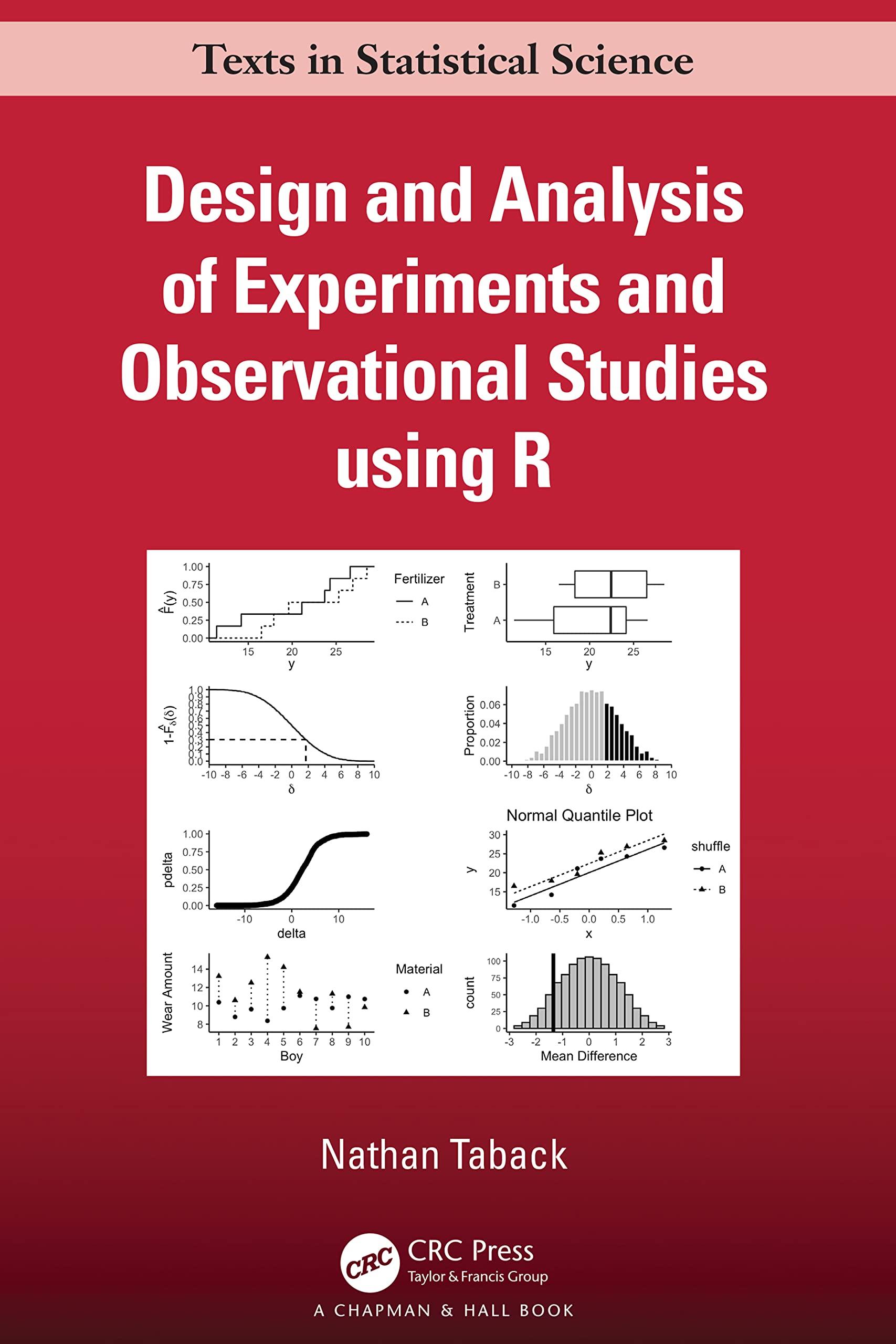The table below describes a hypothetical experiment on 2400 persons. Each row of the table specifies a
Question:
The table below describes a hypothetical experiment on 2400 persons. Each row of the table specifies a category of person, as defined by their pre-treatment predictor $x$, treatment indicator $T$, and potential outcomes $Y(0)$ and $Y(1)$.
| Category | Persons in category | $x$ | $T$ | $Y(0)$ | $Y(1)$ |
|---|---|---|---|---|---|
| 1 | 300 | 0 | 0 | 4 | 6 |
| 2 | 300 | 1 | 0 | 4 | 6 |
| 3 | 500 | 0 | 1 | 4 | 6 |
| 4 | 500 | 1 | 1 | 4 | 6 |
| 5 | 200 | 0 | 0 | 10 | 12 |
| 6 | 200 | 1 | 0 | 10 | 12 |
| 7 | 200 | 0 | 1 | 10 | 12 |
| 8 | 200 | 1 | 1 | 10 | 12 |
In making the table we are assuming omniscience, so that we know both $Y(0)$ and $Y(1)$ for all observations. But the (non-omniscient) investigator would only observe $x, T$, and $Y(T)$ for each unit. For example, a person in category 1 would have $x=0, T=0$, and $Y(0)=4$, and a person in category 3 would have $x=0, T=1$, and $Y(1)=6$.
a. Give an example of a context for this study. Define $x, T, Y(0), Y(1)$.
b. Calculate the the average causal treatment effect using $R$.
c. Is the covariate $x$ balanced between the treatment groups?
d. Is it plausible to believe that these data came from a randomized experiment? Defend your answer.
e. Another population quantity is the mean of $Y$ for those who received the treatment minus the mean of $Y$ for those who did not. What is the relation between this quantity and the average causal treatment effect?
f. For these data, is it plausible to believe that treatment assignment is ignorable given the covariate $x$ ? Defend your answer.
Step by Step Answer:

Design And Analysis Of Experiments And Observational Studies Using R
ISBN: 9780367456856
1st Edition
Authors: Nathan Taback





